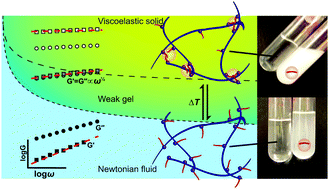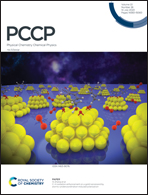Elastic strain-hardening and shear-thickening exhibited by thermoreversible physical hydrogels based on poly(alkylene oxide)-grafted hyaluronic acid or carboxymethylcellulose†
Abstract
The formation of strongly elastic physical gels based on poly(alkylene oxide)-grafted hyaluronan or carboxymethylcellulose, exhibiting both shear-thickening and strain-hardening have been studied using rheometry and explained using a slightly different interpretation of the transient network theory. The graft copolymers were prepared by a quantitative coupling reaction. Their aqueous solutions displayed a thermoreversible continuous transition from Newtonian fluid to viscoelastic solid which could be controlled by the reaction conditions. The evolution of all material properties of the gel could be categorized into two distinct temperature regimes with a fast evolution at low temperatures followed by a slow evolution at high temperatures. The activation energy of the zero shear viscosity and the relaxation time of the graft inside the interconnecting microdomains were almost identical to each other in both temperature regimes. This suggests that the number of microdomains remained approximately constant whereas the aggregation number inside the microdomains increased according to the binodal curve of the thermosensitive graft.



 Please wait while we load your content...
Please wait while we load your content...